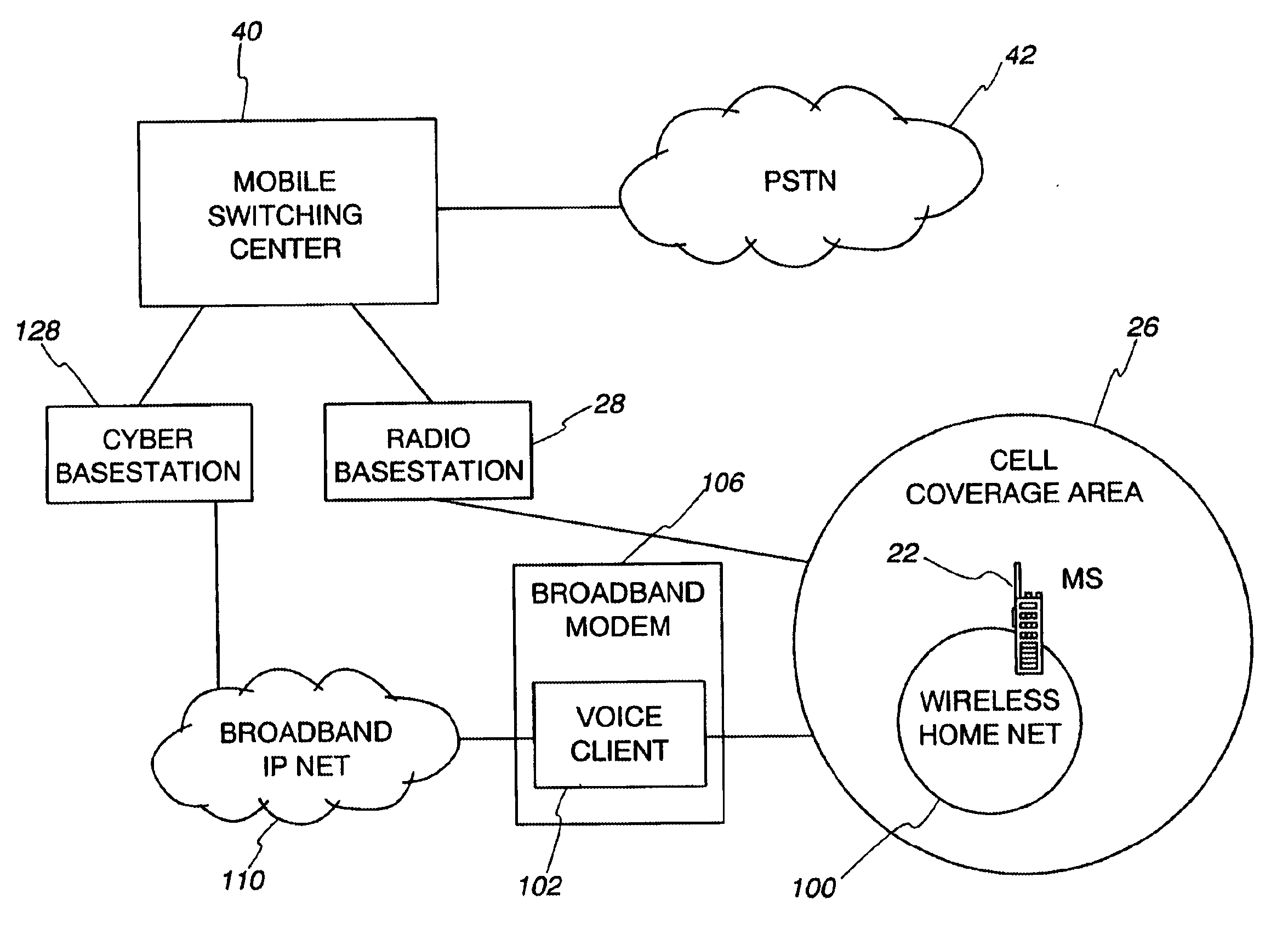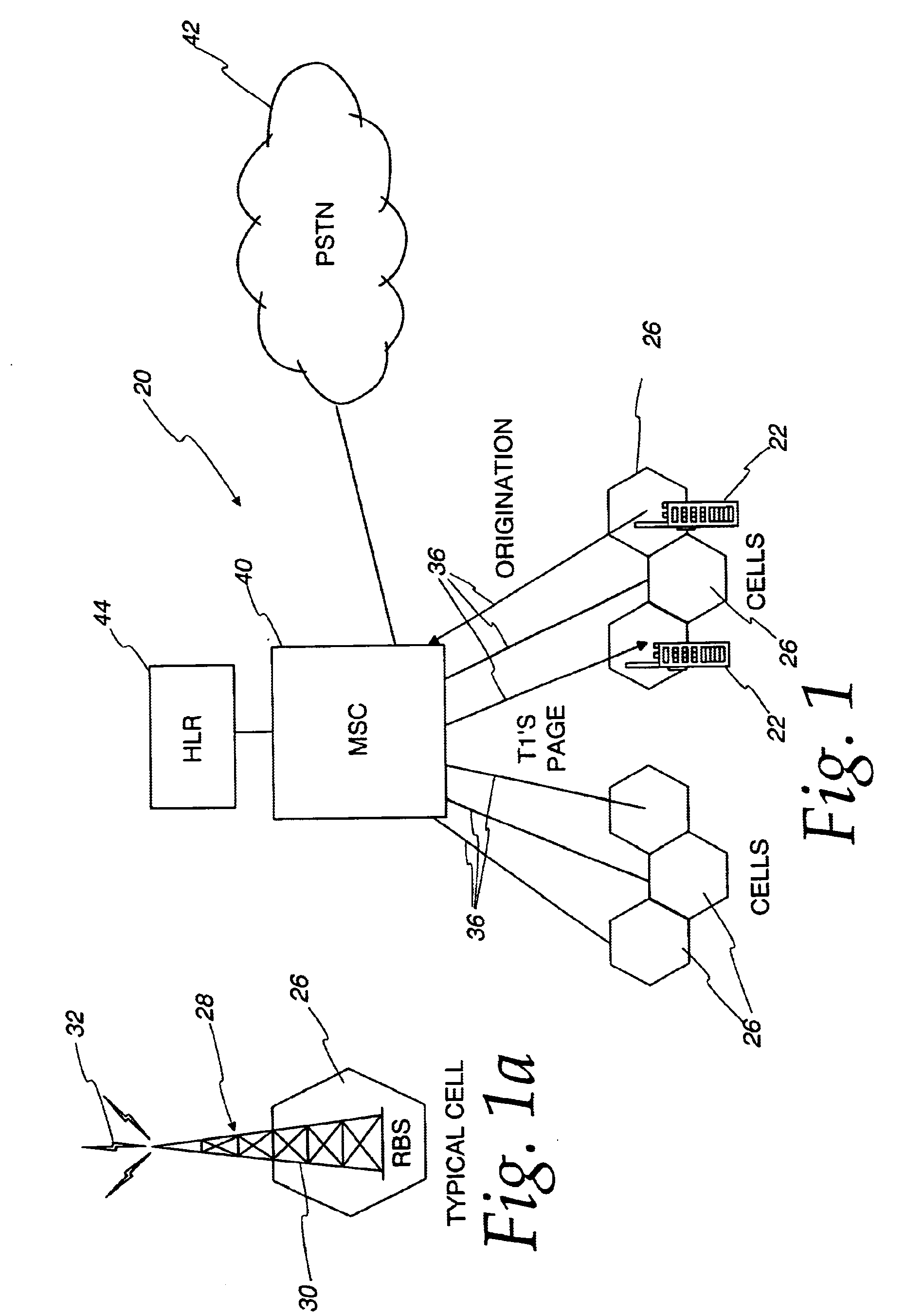Cellular system with cybercells
a cell system and cybercell technology, applied in the field of wireless communication systems, can solve the problems of increasing supply burden, reducing the size of surrounding cells, and expensive to do,
- Summary
- Abstract
- Description
- Claims
- Application Information
AI Technical Summary
Benefits of technology
Problems solved by technology
Method used
Image
Examples
Embodiment Construction
[0021]A typical cellular system 20 with which the present invention may be used is shown in FIG. 1. The cellular system 20 provides wireless communication for mobile terminals or mobile stations (MS) 22 such as cellular telephones. Such cellular systems 20 include multiple cells 26 each having a radio base station (RBS) 28 (see FIG. 1a) typically including a tower 30 and an antenna 32, where the radio base station 28 transmits / sends and receives communications with the mobile terminals 22 and has a basic intelligence to support low level protocol functions.
[0022]T1's or E1's 36 are typically used to connect the cells 26 with a mobile switching center (MSC) 40 which provides voice path switching between two cells 26 or a cell and the Public Switched Telephone Network (PSTN) 42. The mobile switching center 40 provides the central intelligence to control all the radio base stations 28 and process the high level protocol messages from mobile terminals 22 which are relayed by the radio b...
PUM
 Login to View More
Login to View More Abstract
Description
Claims
Application Information
 Login to View More
Login to View More - R&D
- Intellectual Property
- Life Sciences
- Materials
- Tech Scout
- Unparalleled Data Quality
- Higher Quality Content
- 60% Fewer Hallucinations
Browse by: Latest US Patents, China's latest patents, Technical Efficacy Thesaurus, Application Domain, Technology Topic, Popular Technical Reports.
© 2025 PatSnap. All rights reserved.Legal|Privacy policy|Modern Slavery Act Transparency Statement|Sitemap|About US| Contact US: help@patsnap.com



